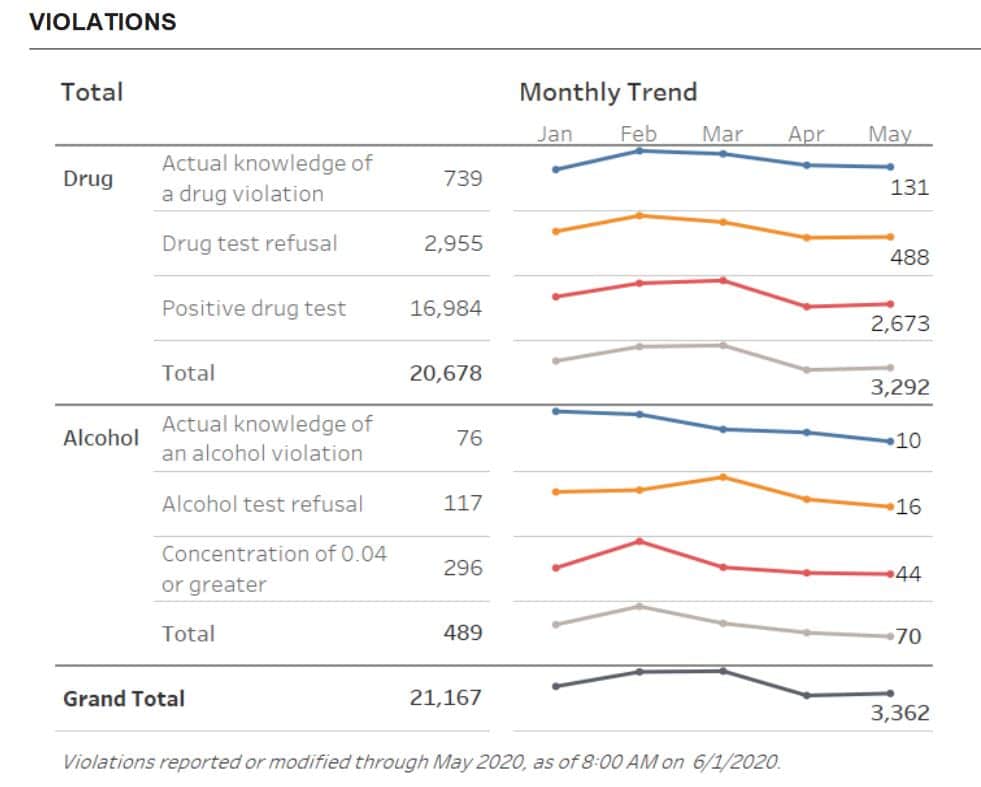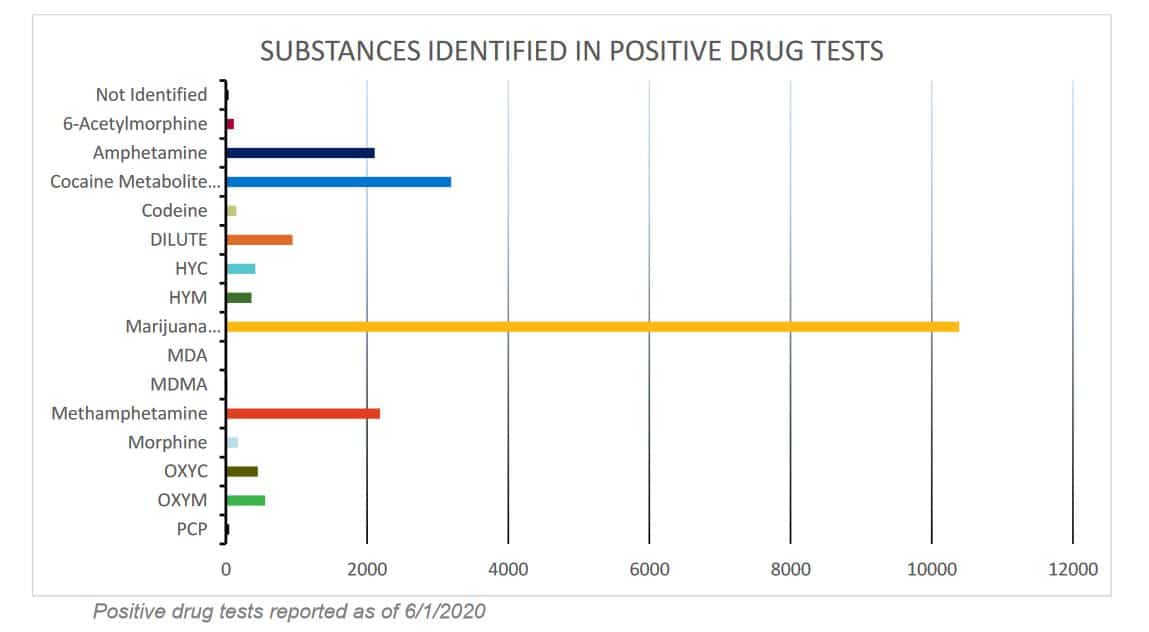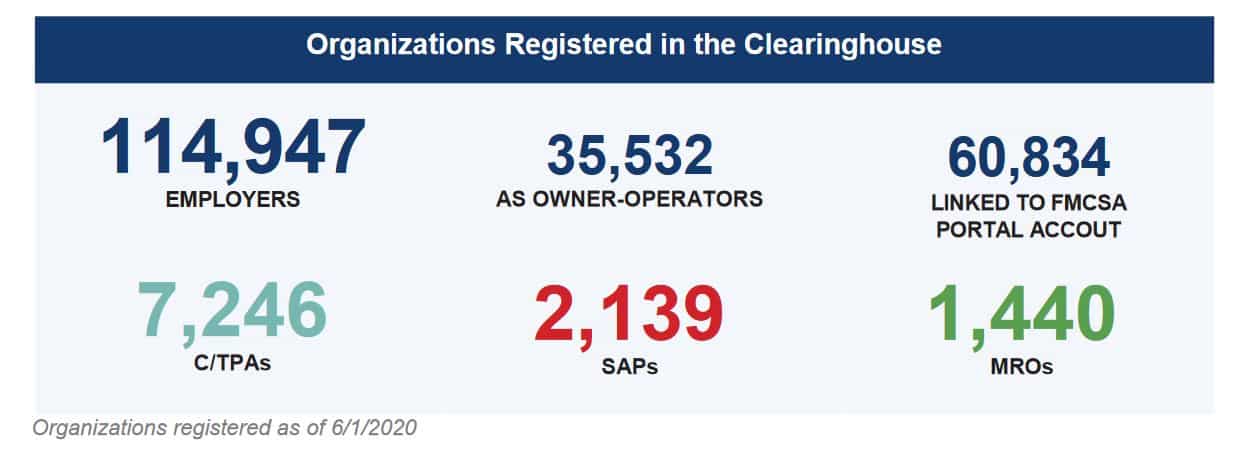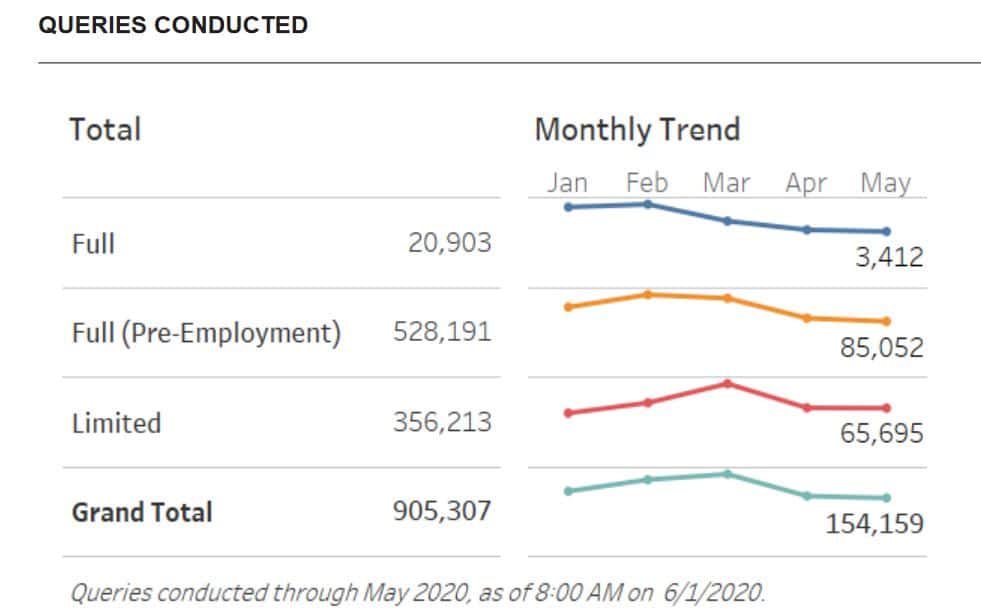As of January 6, 2020, the Federal Motor Carrier Safety Administration (FMCSA) Commercial Driver’s License Drug and Alcohol Clearinghouse has been in place. It is a secure, online database that gives employers and other authorized users real-time information about commercial driver’s license (CDL) and commercial learner’s permit (CLP) holders’ drug and alcohol program violations.
The goal of the Clearinghouse is to improve safety on our Nation’s roadways by giving employers access to information they need to make informed safety decisions about which employees to place in safety-sensitive functions, including operating a commercial motor vehicle (CMV).
According to a report by the FMCSA, here are some statistics that show the effectiveness of the Clearinghouse thus far.
Violations
It seems that the Clearinghouse is already meeting its goal. As of June 1, 2020, employers or their designated consortia/third-party administrators (C/TPA), and medical review officers (MROs) are have reported 21,167 violations. The graph below illustrates the number of violations that have been reported to the Clearinghouse, by month.

Positive drug tests account for 80% of these violations. The graph below shows a breakdown of the number of times a driver tested positive for each substance

Registrations
Registration for the FMCSA Drug and Alcohol Clearinghouse (Clearinghouse) began for all users on September 28, 2019, including drivers, employers, consortia/third-party administrators (C/TPAs), medical review officers (MROs), and substance abuse professionals (SAPs). There has been a total of 1,006,158 registrations since then. The table below shows a summary of the number of organizations that are registered in the Clearinghouse.

Queries
Employers are also required to conduct queries in the Clearinghouse when hiring a new Commercial Driver’s License (CDL) holder and annually for all CDL drivers they currently employ. A total of 905,307 queries have been run through as of June 1, 2020. The graph illustrates the number of each type of query that has been conducted by employers, or their designated service agents, by month.

Return-to-Duty Processes
If a driver has a drug and alcohol program violation recorded against him or her in the Clearinghouse, that driver must be removed from safety-sensitive functions, including operating a commercial motor vehicle, until he or she has completed a return-to-duty (RTD) process. As of June 1, 2020, there were 18,860 drivers in prohibited status.
Select milestones of a driver’s RTD process are recorded in the Clearinghouse. The table below provides a snapshot of the number of drivers who had an open or resolved RTD process in the Clearinghouse as of June 1, 2020.

Here is some additional information about the Clearinghouse, according to FMCSA.
How Do Employers Use The Clearinghouse?
As of January 6, 2020, all employers are required to:
- Report drug and alcohol violations. This will include alcohol test results with a concentration of .04 or greater, refusals to take an alcohol or drug test, as well as actual knowledge of a violation.
- Employers will also report negative return-to-duty (RTD) test results and the successful completion of a driver’s follow-up testing plan.
- The information above must be reported by the close of the third business day after the employer is informed.
- Conduct queries to check if prospective employees are prohibited from performing safety-sensitive functions, such as operating CMVs, due to an unresolved drug and alcohol program violation.
- Employers are also required to query all current employees at least annually. All queries require driver consent.
- Until January 6, 2023, conduct both electronic queries in the Clearinghouse and manual, offline inquiries to previous employers for pre-employment driver investigations.
How Do Others Use The Clearinghouse?
Providing Consent
Drivers will be required to log into the Clearinghouse and provide electronic consent before a current or prospective employer can conduct a full query of a driver’s Clearinghouse record.
No specific timeframe for consenting to pre-employment or ad hoc full queries. If a limited query returns that records were found, a full query must be conducted on the driver within 24 hours, or the driver must be removed from safety-sensitive functions.
Reporting Violations
Medical review officers (MROs) will be required to report verified positive, adulterated, or substituted controlled substances test results, as well as refusals to take a drug test.
Within two business days of the verification or determination. Within one business day of making any change to the results report, MRO must report that changed result.
Reporting on RTD Progress
Substance abuse professionals (SAPs) will be required to report to the Clearinghouse when the initial driver assessment is completed and when the driver is determined to be eligible for RTD testing.
By the close of the business day following the date of the initial assessment. By the close of the business day following the determination the driver is eligible for RTD testing.
NMS Management Services offers Drug Screening and Alcohol Testing programs globally. Our services include collections (in-house and mobile), MRO, account management, and electronic reporting. Our collectors are SAMHSA certified and trained to collect urine, hair, oral fluids and breath alcohol tests. For more information on our screening and testing services, contact us today.
